Get PeakVisor App
Sign In
Search by GPS coordinates
- Latitude
- ° ' ''
- Longitude
- ° ' ''
- Units of Length

Yes
Cancel
Share ×

Scan the QR code and open PeakVisor on your phone
❤ Wishlist ×
Choose
Delete
The Sexten Dolomites are one of the most popular mountain groups of the Dolomites in northern Italy. The main feature of the group is the Tre Cime di Lavaredo / Drei Zinnen, a series of three peaks that resemble three jagged teeth. Additionally, the group is home to Tre Cime Natural Park. There are 182 named mountains in the group, the highest and most prominent of which is Punta Tre Scarperi / Dreischusterspitze (3,151 m / 10,337 ft).
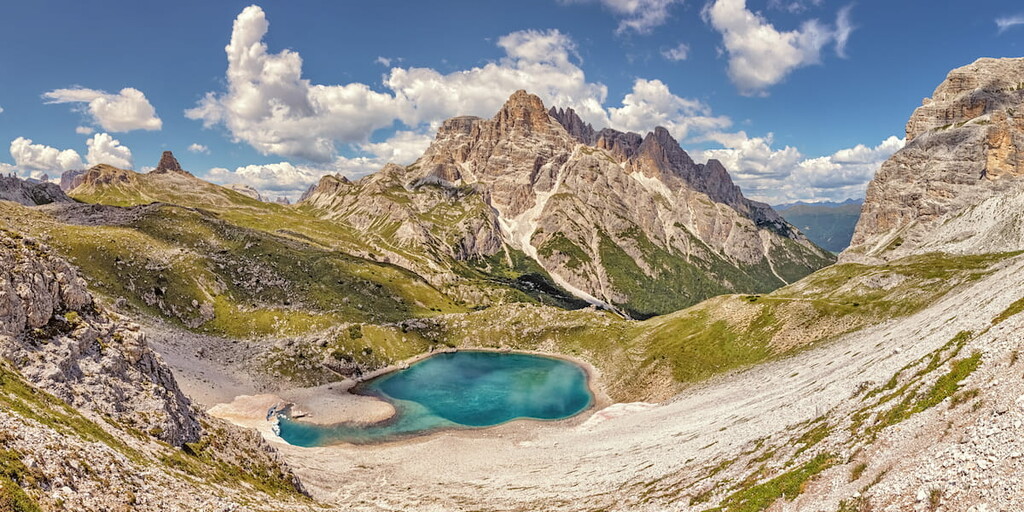
The name of the Sexten Dolomites (Dolomiti di Sesto / Sextner Dolomiten) historically comes from that of the small South Tyrolean town of Sexten / Sesto, which is located on its northern borders.
As you can see for yourself, the name has two variants: German and Italian. This is because South Tyrol has not always been part of Italy, nor has the neighboring region of Trentino. They are both autonomous provinces with a rich history that includes many different cultures.
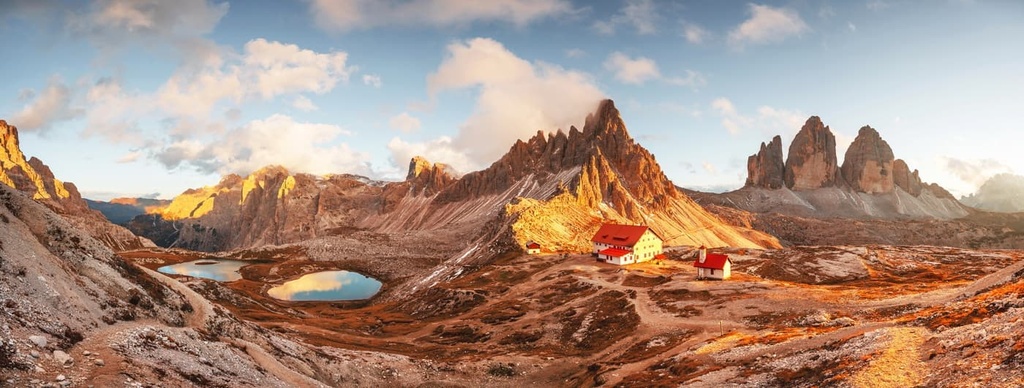
In turn, the Italian version of the name of the Sexten Dolomites means “sixth,” a reference to the six peaks above 2,000 m (3,280 ft) that are located in the Tre Cime Nature Park. These peaks are:
By other accounts, the village of Sexten's name comes from the Ladin words “ad horam sexta,” which means “at the sixth hour,” a reference to its location to the south of the town of Innichen / San Candido. The name first appeared in 965 as Sexta and in 1208 as Sexteum.
It is also important to note that the name of the group was used as the name of the park as well as the entire geographic region mostly until 2010 when the provincial authorities rebranded the area. Now the Sexten Dolomites are better known as the Tre Cime Dolomites / Drei Zinnen Dolomiten area.
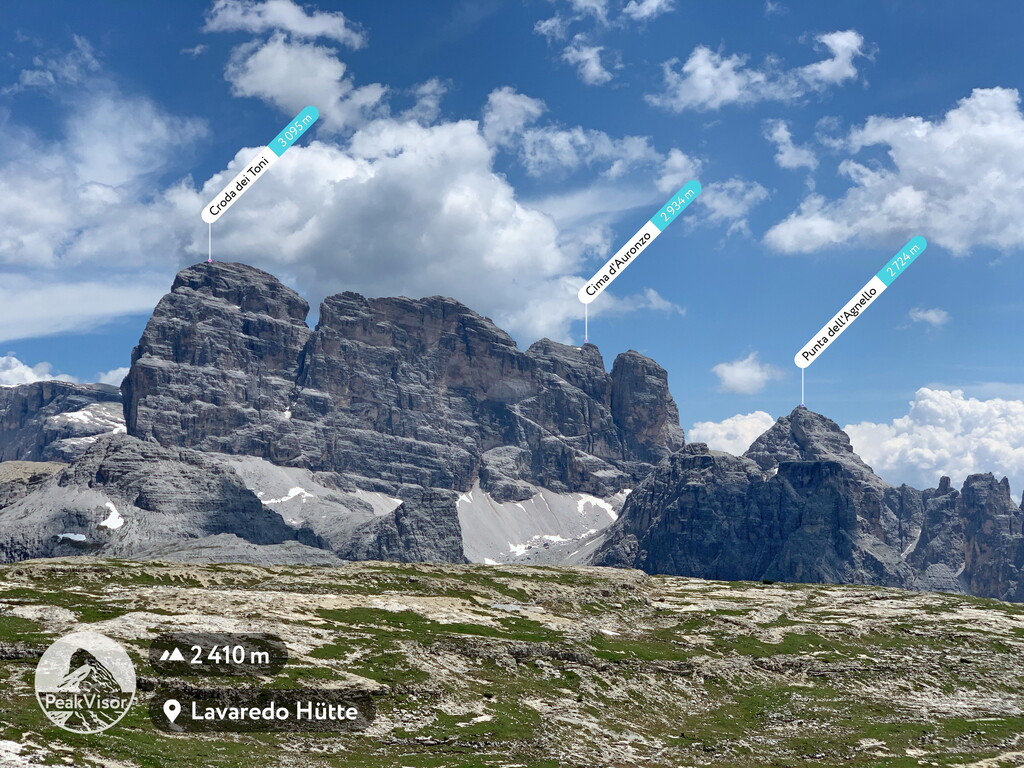
The Dolomiti di Sesto are located in the East Dolomites subregion of the Dolomites between the provinces of Bolzano / South Tyrol in the Trentino-Alto Adige/South Tyrol region and Belluno in the Veneto region. The border between the provinces runs right along with the main landmark of the group, Tre Cime di Lavaredo.
These peaks also form the northeasternmost group in the Dolomites. It is located almost on the border with the Tyrol region in Austria, which is situated only a few dozen kilometers away.
The exact boundaries of the group can be defined by the three great valleys: Val Pusteria / Pustertal in the north, Val di Sesto / Sextental in the north and northeast, lower Val Pòpena and Höhlensteintal / Val di Landro in the west, and Val di Ansiei in the south.
The two main passes on the borders of the group are Col Sant’ Angelo (1,754 m / 5,754 ft) in the southwest and Kreuzbergpass (1,636 m / 5,367 ft) in the northeast.
The Sexten / Sesto is also surrounded by the following other groups, such as the Carnic and Gailtal Alps, which is a huge mountain range to the north (in Austria) and east (in Italy), Marmarole to the south, Sorapiss and Cristallo to the southwest, and the Braies Dolomites to the west.
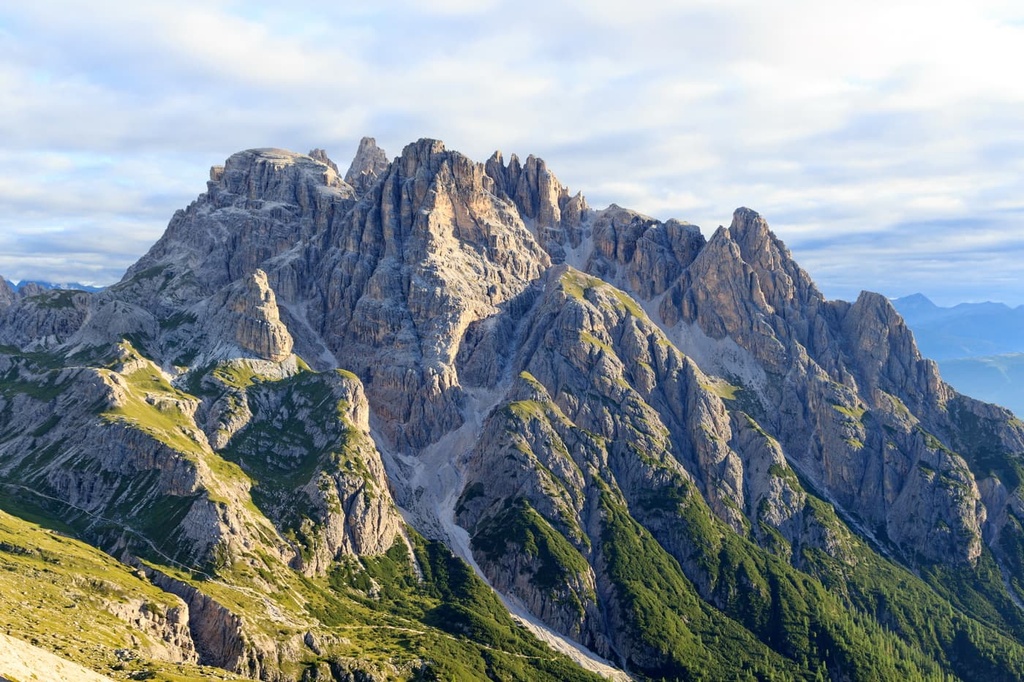
The boundaries of the group also nearly coincide with those of Tre Cime Nature Park, but the park’s territory does not include all of the group’s mountains.
To get to Sesto / Sexten from Bolzano, the capital of South Tyrol province, by car, it will take you approximately 1:45 hours (111 km / 68.9 mi).
Driving the road from Auronzo di Cadore, the largest city and resort to the south of the mountain group, takes only about 45 minutes (33 km / 20.5 mi). In turn, the fastest way to get there is from the town of Belluno, which can be reached from Venice.
The closest major city in Austria is Lienz (50 minutes, 49 km / 30.4 mi). This is more or less the same distance and travel time as from Auronzo.
If you don't have a car, there are regular buses between all these cities. The fastest way to get from Venice to Belluno is by Trenitalia train.
Like other mountain groups in the region, the Sexten Dolomites are composed of the mineral of the same name, dolomite. It is a hard, mostly light limestone with special properties to absorb sunlight. As a result, dolomite turns all the warm colors of the rainbow at sunset and turns gray after sunset. Therefore, these mountains are also called the “Pale Mountains.”
In the case of this mountain group, which attracts many tourists, these aesthetic properties of dolomite are especially important. Many know the Dolomites precisely because of the view of Tre Cime at sunset.
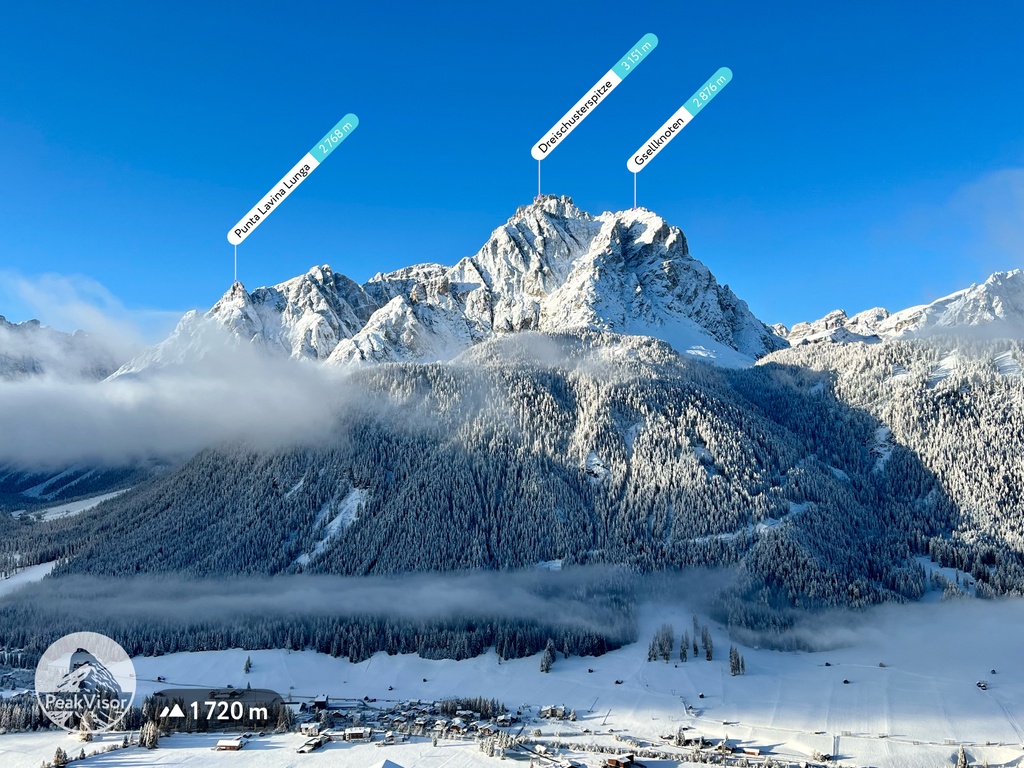
That’s what happened to me in August 2013 when I went on my very first hike in the Dolomites. After walking two-thirds of the famous Tre Cime di Lavaredo Loop Trail, I found myself at the equally famous rifugio Locatelli around seven o’clock—just in time for sunset during that last month of the summer. From the rifugio, you can see the most famous view of the Three Peaks, which has since been replicated in millions of tourist photos, postcards, and calendars.
But in my opinion, despite its touristy nature, this view of Tre Cime di Lavaredo is worth it. Watching those peaks turn orange and pink was one of the brightest moments of my life—literally.
That said, this effect can also be seen on many other mountains in the region with great vertical walls and sharp peaks, such as Pala, Sella, Marmolada, and Tofane, among others. But if you want a truly iconic Dolomites view, the sunset at Tre Cime di Lavaredo can’t be beat.
The landscape of the Dolomiti di Sesto was formed by water and glacier ice over the past 2 to 3 million years. In particular, this glacial activity is clearly visible in the Bacherntal / Alta Val Fiscalina and on the plateaus around the Tre Cime di Lavaredo.
The latter, of course, is the most important landscape feature in the range. However, the whole group is characterized by a large collection of mountains with unusual shapes. For example, Cadini di Misurina looks like a set of needles, Monte Paterno / Paternkofel looks like a pyramid, and Croda Rosa looks a lot like a rosebud.

Besides unusual mountain peaks, the other features of the local landscape are its huge canyons, mountain plateaus, alpine meadows, pine and spruce forests, and everything else the Dolomites are known for.
The area is also incredibly rich in water resources. Perhaps the second main attraction of the group after Tre Cime is Misurina Lake, which is located on the way to it. There are also the equally beautiful but less famous Dobbiaco Lake (Toblacher See), Landro Lake (Dürrensee), and Santa Caterina Lake (Lago di Santa Caterina), which are located on the western and southern borders of the group.
As a kind of summary of this subsection: the Sextner Dolomiten has an incredibly diverse landscape—I would also put it at the top of more than a dozen mountain groups in the Dolomites that I have visited. These mountains are more reminiscent of other planets, and hiking through them is a cosmic, not Earthly journey.
The Sexten Dolomites are one of more than 20 mountain groups in the Dolomites according to the classification of the Eastern Alps of the German-Austrian Alpine Club (AVE).
But according to the second most common classification of the Alps, the Italian SOIUSA, the Sexten are a separate group in the Dolomiti di Sesto within the di Braies e d’Ampezzo of the Dolomites.
Internally, the group is divided into eight main parts, which are as follows:

Sexten Dolomites have five main areas for hiking. In each of them, you will find many trails of different lengths and levels of difficulty. There are also many via ferrata for those who want to have a bit more of an adventure. Here are some of the top hikes and via ferrata to check out in the Sexten Dolomites:
If you’re only planning on visiting the region once in your life, you need to hike the iconic Tre Cime di Lavaredo Loop.
This loop is a straightforward half-day route around the group’s main attraction, Tre Cime di Lavaredo. The route is 10 km (6.2 mi) long and has an elevation gain of 368 m (1,207 ft).
Yes, there will be a lot of hikers on the trail, but they are usually only at the rifugios. Therefore, you can still enjoy some solitude on the trail.
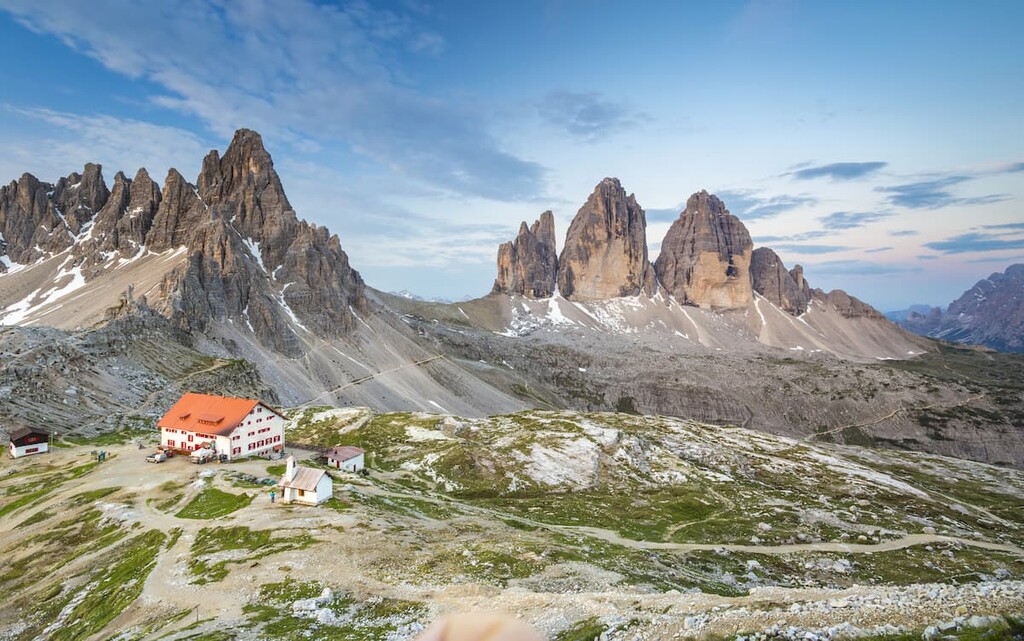
A two-day hike through the entire Tre Cime Nature Park through the Fiscalina Valley around the highest peak in the park and the entire Sexten Dolomites, Cima Tre Scarperi is highly recommended.
It’s just as beautiful and inspiring as Tre Cime. Plus, there will be hardly any people on this trail during your trip. For example, after descending into the valley, I walked all alone for two days.
At the same time, this is a pretty challenging hike. If you don’t want to spend two days climbing mountains, there are several routes of lesser length and difficulty in the park. For example, you could hike from Passo di Monte Croce Comelico (1,745 m / 5,725 ft) to Croda Sora i Colesei (2,329 m / 7,641 ft) and back.
Another excellent option is to reach Tre Cime on foot from one of the smaller valleys that surround this group such as Valle Marzon, Valle Longeres, Valle della Rienza, and Val Campo di dentro.
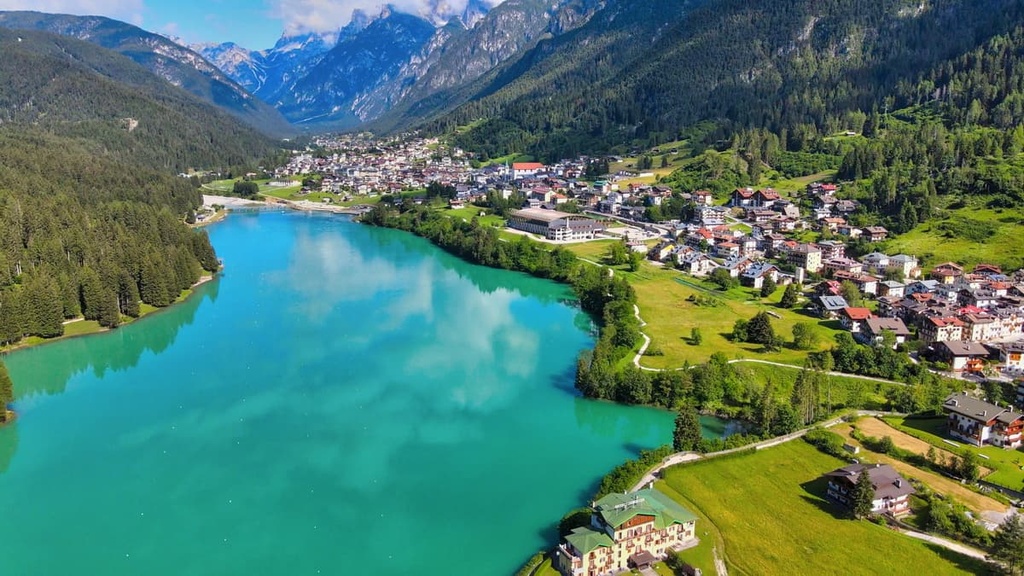
Another hiking option is to walk around Tre Сime and down into one of the valleys, for example, to the town of Auronzo di Cadore. This lets you get a bit further off the beaten path while still letting you explore the beauty of the surrounding region.
For hikers that want to get even further off the beaten path, you can turn your attention to one of any of the other subgroups in the Sexten Dolomites.
For example, many of the trails start from Lake Misurina and lead to the neighboring Cadini di Misurina group. This route can be traversed in one day on the trail or you can venture out and do some peak ascents in the region if you have the right mountaineering skills and equipment.

The Sextner Dolomiten are crossed by two of the eight long high trails in the region called Alta Via, namely Alta Via 4 and Alta Via 5.
The first route, the Alta Via 4, runs from the town of San Candido in Val Pusteria, BZ to the city of Pieve di Cadore, BL over the course of 85 km (52.8 mi).
The second route, the Alta Via 5, goes from Sesto in Val Pusteria, BZ to Pieve di Cadore, BL over the course of 90–100 km (55.9–62.1 mi).
To hike through either trail through the Sexten Dolomites, it normally takes about 2 to 3 days.
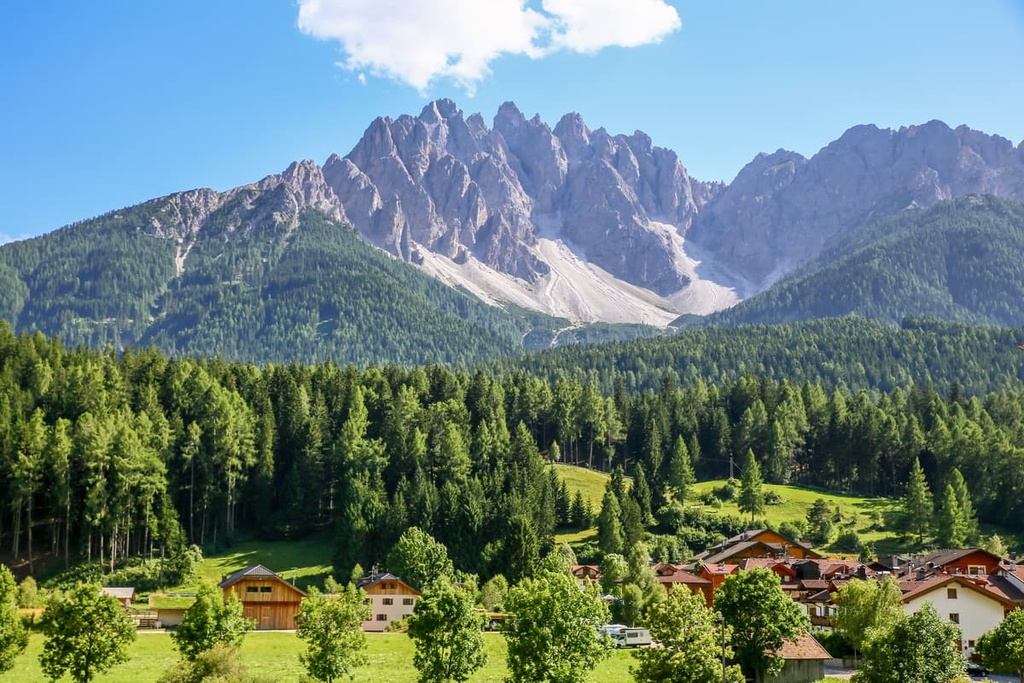
In the Sexten Dolomites group, you can choose at least one of the ten main via ferratas, two of which are located on the mountains near Tre Cime:
Other via ferrata in the group include:

The Dolomiti di Sesto includes one of the 12 ski areas of the Dolomiti Superski system. The slopes are located on the northern borders of the park with easy access from the regional capital of Sesto.
Here’s the basic information of the Tre Cime Ski Resort that you ought to know before your trip:
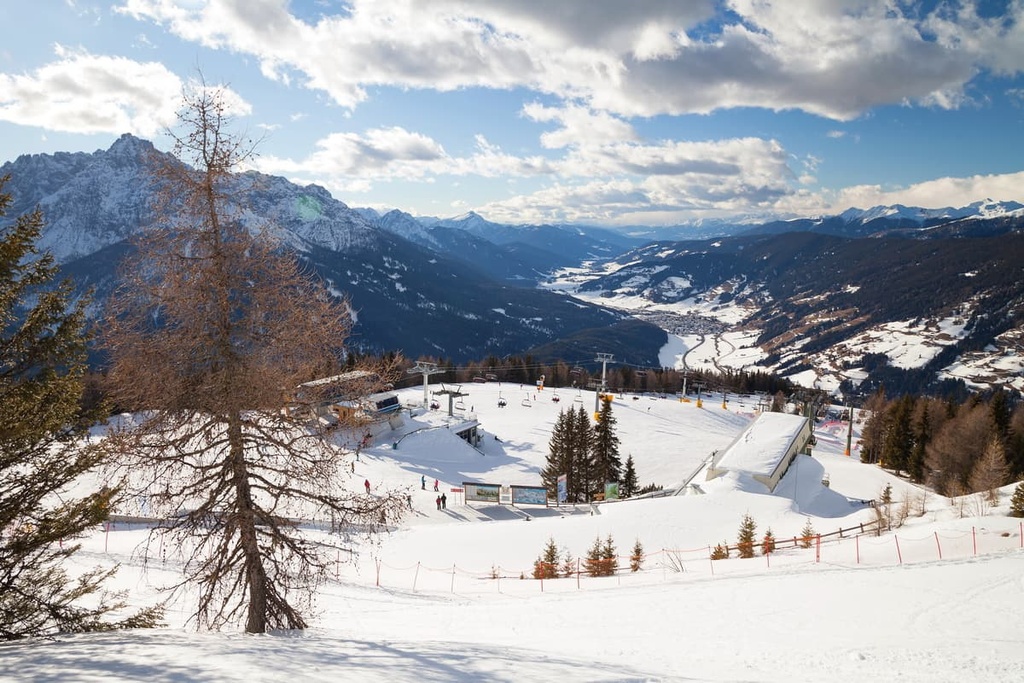
Additionally, the Tre Cime Ski Resort is Italy’s number one cross-country skiing destination. There are 200 km (124.2 mi) of linked cross-country tracks with panoramic views of the Dolomites, including night skiing, FIS tracks, and high-altitude tracks.
Some of the tracks lie within the Tre Cime Nature Park, so you can enjoy its beauty in the wintertime on skis, which is a very unusual experience.
Check the Sexten Dolomites ski resorts map on the larger Veneto and Italy ski maps in the World Mountain Lifts section of the site. It includes information about open ski lifts / slopes in the Sexten Dolomites in real-time with opening dates and hours. There are also year-round cable cars, funiculars, cog railways, aerial tramways, and all other types of mountain lifts.
When traveling through the Sextner Dolomiten, be sure to visit one of the two official tourist centers of the region. Given the location of the group between two provinces of two different regions, there are two main offices:
Sesto Tourist Information (Associazione Turistica di Sesto)
Via Dolomiti, 45, 39030, Sesto, BZ, Italy
+390474710310
Opening Hours:
Tourist Consortium Tre Cime Dolomiti (Consorzio Turistico Tre Cime Dolomiti)
Via Corte, 18, 32048, Auronzo di Cadore, BL, Italy
+39043599603
Opening Hours:
You can also visit the tourist office in Toblach (Dobbiaco), the third main town in the group. The town is also home to the visitor center for the Tre Cime Nature Park.
Tourist Info Toblach / Dobbiaco
Dolomitenstr, 3 / Via Dolomiti, 3, Toblach / Dobbiaco, BZ, Italy
Tre Cime Nature Park Visitor Center
Kulturzentrum Grand Hotel Toblach / Centro Culturale Grand Hotel Dobbiaco, Dolomitenstraße, 37 / Via Dolomiti, 37, Toblach / Dobbiaco, 39034, BZ, Italy
+390474973017
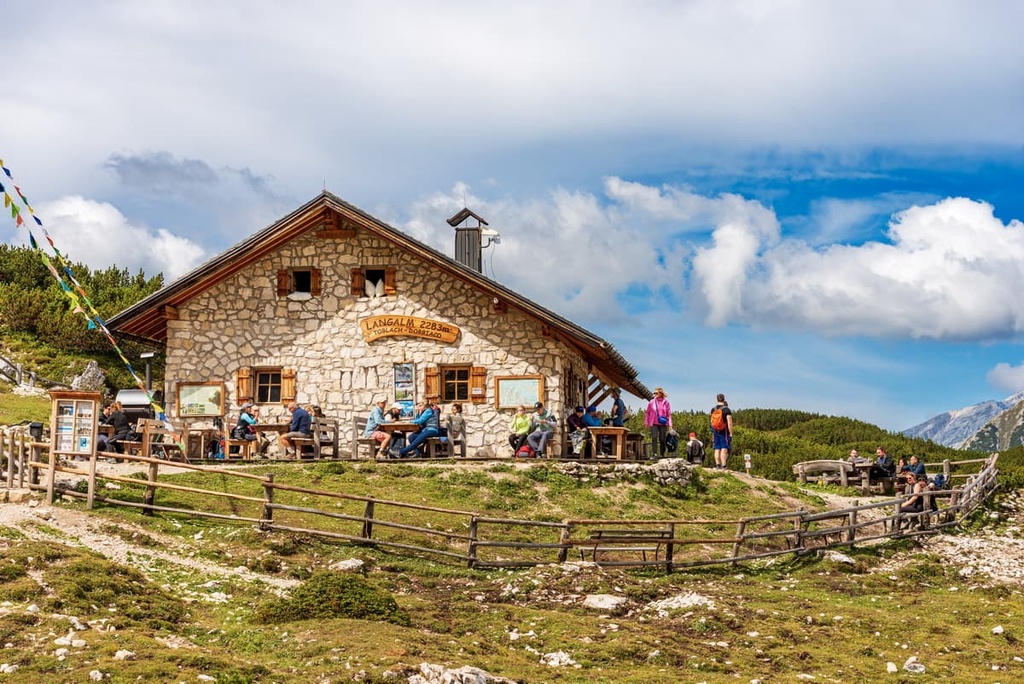
In the Sexten Dolomites, there is a huge choice of accommodations for visitors to enjoy.
But if we consider hiking to be the main type of outdoor activity in the region, the first thing that comes to mind is of course the mountain huts. Thanks to these huts, you can spend the night at over 2,000 m (3,280 ft) in relatively comfortable conditions (a place in a common room or a private room, dinner and breakfast, and a shower) all while enjoying the beautiful mountain views at sunset and sunrise.
The three main huts in the group are expectedly located around Tre Cime. They are:
Rifugio Locatelli has the best view of Tre Cime, but it is very popular. Rifugio Auronzo is located near the bus stop, but I wouldn’t advise staying there because it’s even more crowded than Locatelli and there’s no view of the mountain. Therefore, the ideal option is rifugio Lavaredo.
The list of other huts in the group include:
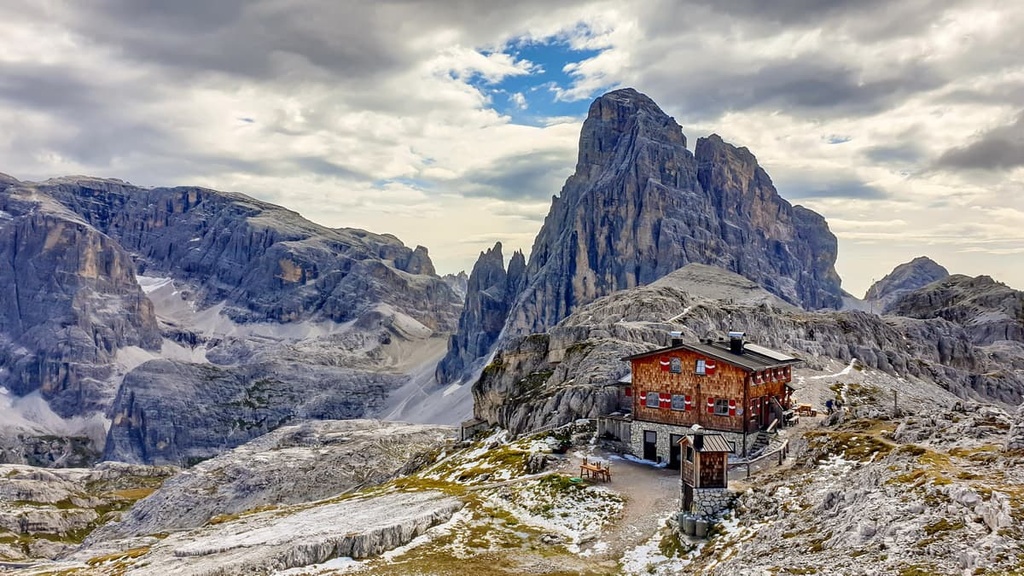
For those who are going to climb the via ferrata, you may want to stay in one of the few bivouacs in the Dolomiti di Sesto. These include bivacco Batt. Cadore, bivacco Ai Mascarboni and bivacco De Toni.
There are also many opportunities to go camping in the Tre Cime area including the campsite Alla Baita Misurina, campsite Toblacher See, and campsite Caravan Park Sexten, among others.
Finally, there is an option to pitch a tent near Tre Cime and other mountains. Officially, this kind of camping is forbidden in Italy, but if you can’t find any other accommodation before the night falls you're allowed to do so for the night.
The main cities located near the Sexten Dolomites are Sexten / Sesto, Auronzo di Cadore and Misurina, and Toblach / Dobbiaco. Each of these towns is worthwhile to visit for at least a day or two before or after your hike through the mountains. Here are some of the main architectural and cultural attractions in each town and resort.
Like in most of the towns in the Dolomites, the main attractions of Sexten / Sesto are various churches, such as Chiesa di Bagni di Moso, Chiesa di Moso, as well as Cappella del bosco.
The names of the churches come from the place called “I Bagni di Moso” (Moos Baths), which are mineral springs.
Sexten is also home to the remains of the Austrian Fort Mitterberg (1885–1889). Such forts were placed along the entire length of the former Austro-Hungarian Empire’s southern border with the Kingdom of Italy
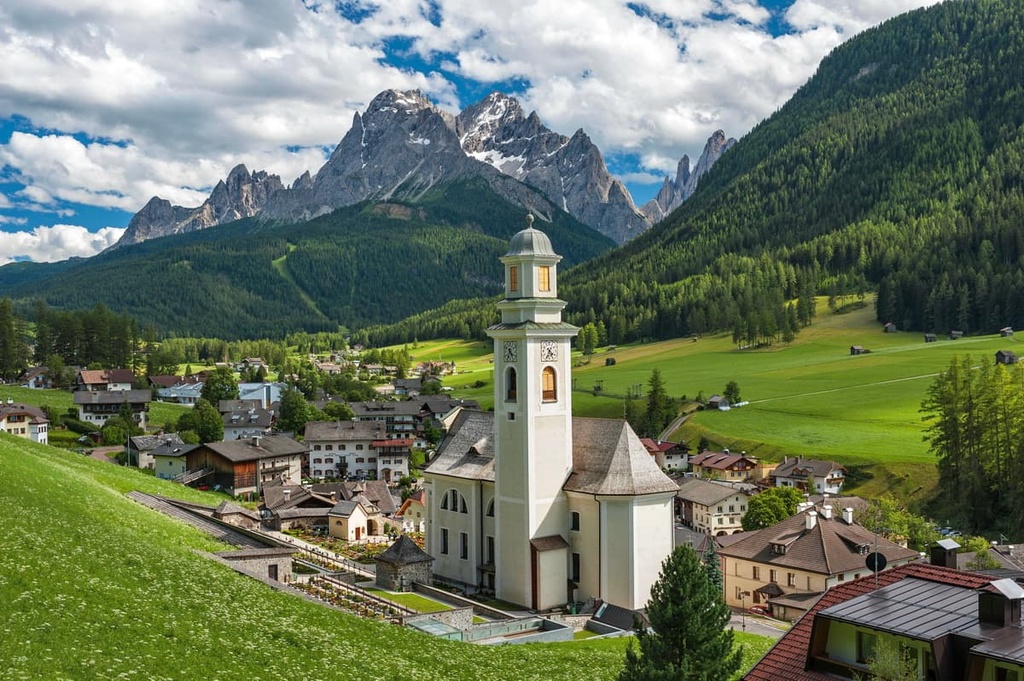
For more information, check out the official tourist site: Drei-Zinnen.info
The two main churches of Auronzo di Cadore are Chiesa di Santa Giustina and Chiesa di San Lucano. Both are located in the city center.
What separates this town from others is maybe the Civic Museum (Museo Civico) with four sections dedicated to different topics of the Dolomites: the sciences, archeology, the “Great War” (WWI), and mining and mineralogy.
On Musirina Lake, the most famous buildings are Istituto Pio XII, which features a postcard view of Sorapiss Group behind it and the Gran Hotel Misurina on the opposite side of the lake.
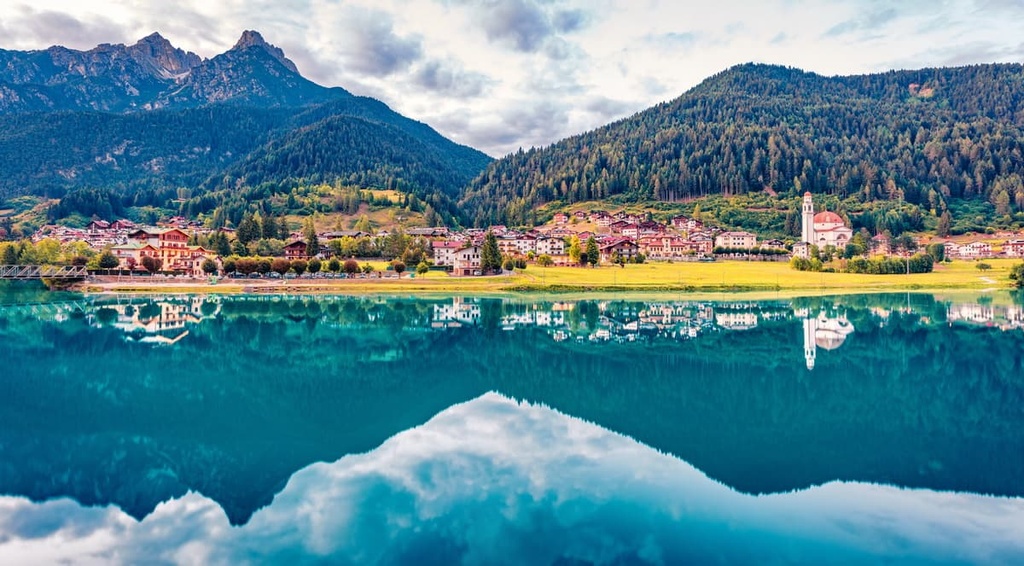
For more information, visit the official tourist site: AuronzoMisurina.it.
The town of Toblach / Dobbiaco is fairly large, so it is home to a collection of interesting destinations. Among churches, the main ones on the town are Santuario di Santa Maria, Chiesa di San Giovanni Battista, Chiesa di San Nicolò, and Chiesetta di Candelle.
As in Misurina, there is also a famous hotel, called simply the Grand Hotel, which was the first in Toblach. It was one of the first hotels in the whole Pusteria Valley, and it was built in avant-garde style.
The town is also well-known in the province of South Tyrol because of many rustic public fountains, some of which are beautifully handcrafted in wood. In particular, it’s worth visiting La Fontana delle Due Acque (the Fountain of Two Waters).
Check out the official tourist site for more information: Drei-Zinnen.info.
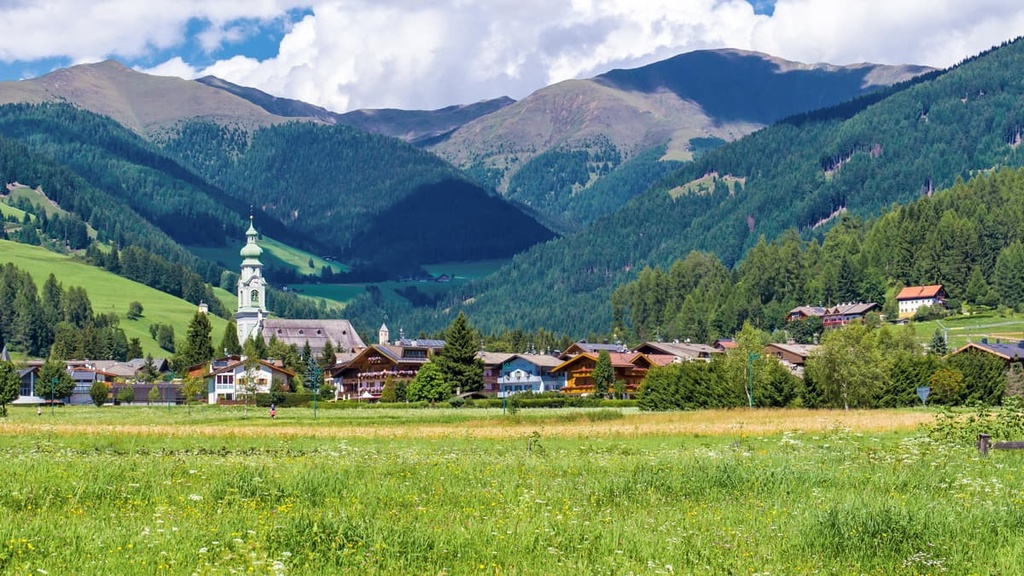
Explore Sexten Dolomites with the PeakVisor 3D Map and identify its summits.








